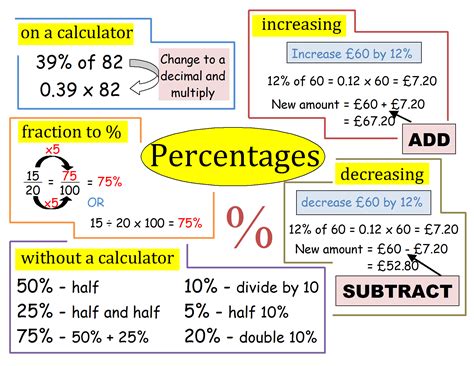What Percent Of 50 Is 7
Kalali
Apr 05, 2025 · 4 min read

Table of Contents
What Percent of 50 is 7? A Comprehensive Guide to Percentage Calculations
This seemingly simple question, "What percent of 50 is 7?", opens the door to a broader understanding of percentage calculations. While the answer itself is straightforward, exploring the different methods of solving it and understanding the underlying principles provides a valuable foundation for tackling more complex percentage problems. This article will delve deep into this seemingly basic question, providing various solution methods, real-world applications, and further expanding your knowledge of percentages.
Understanding Percentages: The Fundamentals
Before we dive into calculating what percent of 50 is 7, let's briefly review the core concept of percentages. A percentage is a fraction or ratio expressed as a number out of 100. The symbol "%" represents "per cent" or "out of one hundred." For example, 50% means 50 out of 100, which can also be expressed as the fraction 50/100 or the decimal 0.5.
Method 1: Using Proportions
This method utilizes the power of proportions to solve for the unknown percentage. We can set up a proportion where we equate two ratios:
- Part/Whole = Percentage/100
In our case:
- Part = 7
- Whole = 50
- Percentage = x (the unknown we're solving for)
Therefore, our proportion becomes:
7/50 = x/100
To solve for x, we can cross-multiply:
7 * 100 = 50 * x
700 = 50x
Now, divide both sides by 50:
x = 700/50
x = 14
Therefore, 7 is 14% of 50.
Method 2: Using Decimal Conversion
This method involves converting the fraction representing the part-to-whole relationship into a decimal and then multiplying by 100 to obtain the percentage.
- Form the fraction: 7/50
- Convert to a decimal: Divide 7 by 50: 7 ÷ 50 = 0.14
- Convert to a percentage: Multiply the decimal by 100: 0.14 * 100 = 14%
Therefore, 7 is 14% of 50. This method highlights the direct relationship between decimals and percentages.
Method 3: Using the Percentage Formula
The fundamental percentage formula is:
Percentage = (Part/Whole) * 100
Plugging in our values:
Percentage = (7/50) * 100
Percentage = 0.14 * 100
Percentage = 14%
Again, we arrive at the answer: 7 is 14% of 50. This method directly applies the core percentage formula and is highly efficient.
Real-World Applications of Percentage Calculations
Understanding percentage calculations is crucial in numerous real-world scenarios. Here are a few examples:
-
Discounts and Sales: Retailers frequently advertise discounts as percentages. If a $50 item is discounted by 14%, you can use these methods to calculate the discount amount ($7) and the final price ($43).
-
Taxes and Interest: Calculating sales tax, income tax, or interest on loans all involve percentage calculations. For example, calculating the interest on a loan requires understanding how a percentage of the principal amount is added over time.
-
Financial Analysis: In finance, percentages are essential for analyzing financial statements, calculating returns on investments (ROI), and understanding profit margins.
-
Data Analysis and Statistics: Percentages are used extensively in data analysis and statistics to represent proportions, trends, and changes in data. For example, the unemployment rate is expressed as a percentage of the total workforce.
-
Scientific Measurements and Experiments: In scientific fields, percentages are used to express concentrations, error margins, and changes in experimental data.
Expanding Your Understanding: More Complex Percentage Problems
While the "What percent of 50 is 7?" question is relatively simple, it serves as a springboard for understanding more complex percentage problems. Let's consider some variations:
Finding the Whole when Given a Part and Percentage:
Imagine you know that 14% of a number is 7. How would you find that number (the whole)?
We can rearrange the percentage formula:
Whole = (Part / Percentage) * 100
Whole = (7 / 14) * 100
Whole = 0.5 * 100
Whole = 50
This demonstrates the inverse calculation.
Finding the Part when Given the Whole and Percentage:
If you need to find 14% of 50, you can modify the formula:
Part = (Percentage/100) * Whole
Part = (14/100) * 50
Part = 0.14 * 50
Part = 7
This method shows how to calculate a percentage of a given amount.
Percentage Increase and Decrease:
Percentage change calculations are frequently encountered, particularly when analyzing growth or decline in various quantities. The formula for percentage increase is:
Percentage Increase = [(New Value - Old Value) / Old Value] * 100
Similarly, the formula for percentage decrease is:
Percentage Decrease = [(Old Value - New Value) / Old Value] * 100
Conclusion: Mastering Percentage Calculations
The seemingly simple question, "What percent of 50 is 7?", provides a robust foundation for comprehending percentage calculations. Through various solution methods – proportions, decimal conversion, and the direct application of the percentage formula – we've demonstrated that 7 is 14% of 50. The real-world applicability of percentages is vast, spanning numerous fields from finance and retail to science and statistics. By understanding the principles and methods outlined in this article, you can confidently tackle more complex percentage problems and effectively utilize this crucial mathematical concept in various aspects of life. Continuous practice and application will further solidify your understanding and build your expertise in this fundamental area of mathematics.
Latest Posts
Latest Posts
-
Cuanto Es Un Litro De Agua En Onzas
Apr 05, 2025
-
2000 Mg Equals How Many Grams
Apr 05, 2025
-
What Is 2 3 Of 100
Apr 05, 2025
-
What State Of Matter Is Lightning
Apr 05, 2025
-
Flood Waters Moving Soil From One Location To Another
Apr 05, 2025
Related Post
Thank you for visiting our website which covers about What Percent Of 50 Is 7 . We hope the information provided has been useful to you. Feel free to contact us if you have any questions or need further assistance. See you next time and don't miss to bookmark.
